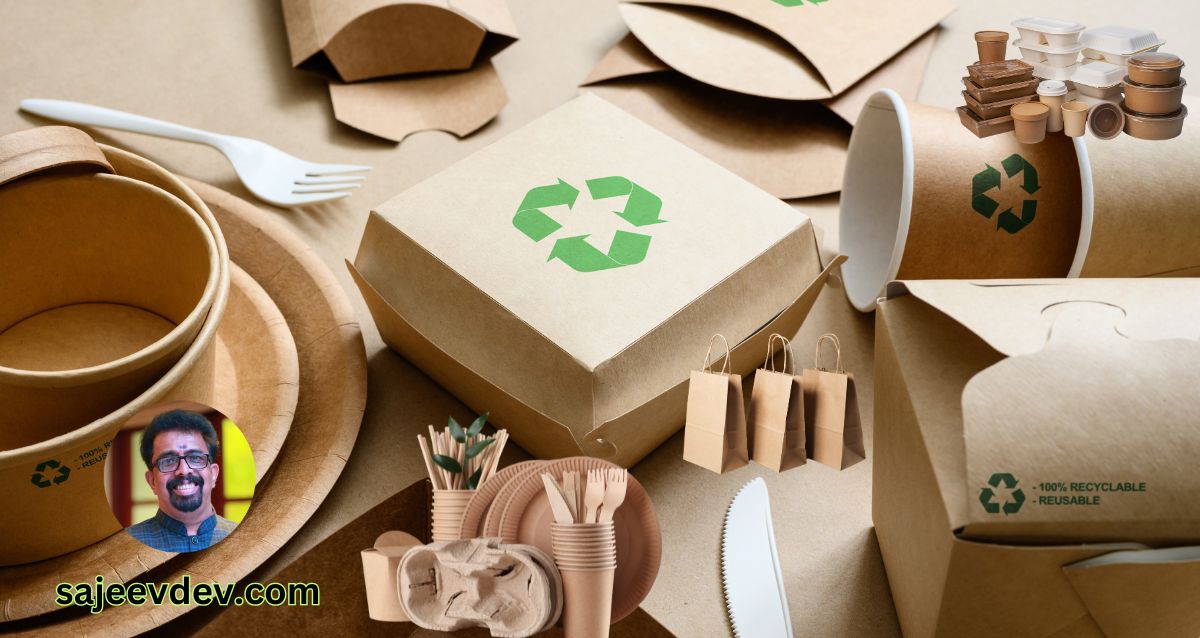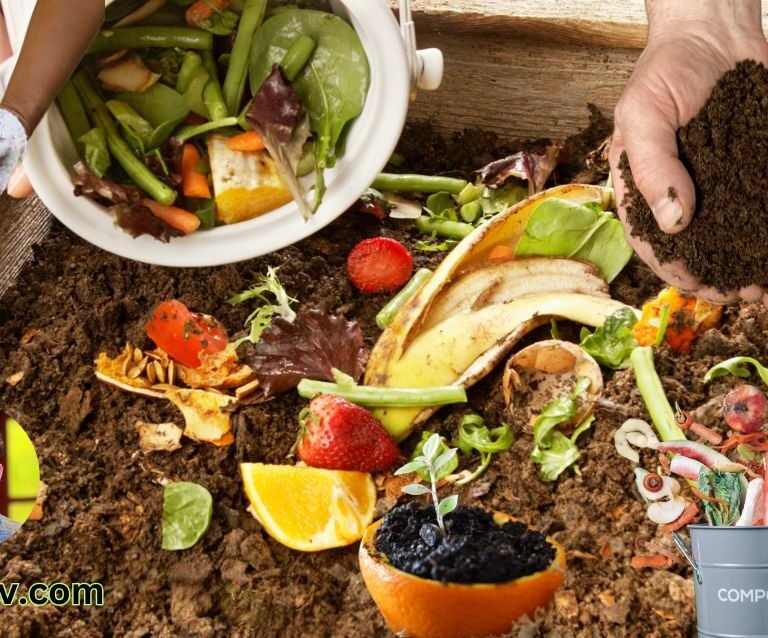Biodegradable Packaging
In recent years, biodegradable packaging has gained significant attention as a viable alternative to traditional plastic packaging. Biodegradable packaging refers to materials that can decompose naturally over time through the action of microorganisms, resulting in minimal impact on the environment. Unlike conventional plastics, which can take hundreds of years to break down, biodegradable options are designed to return to their natural elements, thus reducing the burden of waste accumulation in landfills and natural ecosystems.
The surge of interest in biodegradable packaging can be attributed to mounting concerns surrounding plastic waste. With an alarming increase in plastic production and consumption, the environmental degradation caused by plastic pollution has become a pressing issue. Plastics are not only detrimental to wildlife, but they also have far-reaching effects on ecosystems and human health. As plastic waste continues to pollute oceans, rivers, and landscapes, the urgency for sustainable solutions has never been clearer.
The shift toward biodegradable packaging represents a proactive response to these environmental challenges. This innovative packaging solution is typically made from renewable resources such as plant-based materials, including corn starch, sugarcane, or other organic substances, which can be composted or otherwise integrated back into the environment. By adopting biodegradable options, businesses and consumers can significantly decrease their ecological footprints and support more sustainable practices.
Moreover, the regulatory landscape is increasingly favoring the adoption of biodegradable materials. Many governments are implementing stricter regulations on single-use plastics, alongside incentives for adopting environmentally-friendly alternatives. This policy shift further accelerates the movement toward biodegradable packaging, making it a crucial component of contemporary efforts aimed at waste reduction and environmental conservation.
The Importance of Minimizing Waste Load
In recent years, there has been an increasing awareness of the crucial need to minimize waste load, particularly in the context of environmental degradation and climate change. The shift towards biodegradable packaging is more than just a trend; it represents a necessary response to the unsustainable practices that have historically dominated packaging industries. Traditional packaging materials, such as plastics, contribute significantly to landfill waste and pollution, with millions of tons ending up in oceans and natural habitats, adversely affecting ecosystems and biodiversity.
Adopting biodegradable packaging plays a vital role in reducing landfill waste. Unlike conventional plastics that can take hundreds of years to decompose, biodegradable materials are designed to break down more rapidly when exposed to natural conditions. This not only minimizes the volume of waste that accumulates in landfills but also decreases the production of harmful emissions associated with plastic decomposition, such as methane and toxic leachates. By shifting to biodegradable alternatives, businesses and consumers can collectively lower their ecological footprint and contribute to a cleaner environment.
Moreover, the benefits of minimizing waste extend beyond mere volume reduction. By embracing sustainable packaging solutions, we reduce the reliance on fossil fuels, which are the primary source of traditional plastic production. This transition not only fosters a more sustainable supply chain but also mitigates pollution linked to petroleum extraction and processing. As biodegradable packaging materials can be sourced from renewable resources, this further highlights their significance in promoting a circular economy.
Given these compelling environmental benefits, it is increasingly urgent for companies and consumers to adopt biodegradable packaging alternatives. The future of our planet depends on a collective commitment to minimizing waste loads, fostering sustainability, and taking actionable steps towards a waste-free environment. Recognizing the importance of this shift can catalyze change at both individual and corporate levels, allowing us to leave a healthier world for future generations.
Understanding Biodegradability: What Does It Mean?
Biodegradability refers to the capacity of materials to be broken down by microorganisms, such as bacteria and fungi, into natural substances like water, carbon dioxide, and biomass. This process occurs through a biological mechanism, and it is crucial for minimizing environmental impact. The term itself is often mistakenly understood; not all biodegradable products decompose under every condition, which leads to common misconceptions about their effectiveness and environmental benefits.
Several factors influence the biodegradation of materials. Primarily, temperature plays a significant role; warmer conditions generally accelerate the decomposition process. Additionally, adequate moisture levels are necessary, as dry environments can hinder microbial activity, causing the materials to decompose much slower than intended. Thus, the term “biodegradable” can sometimes be misleading, as it implies that the material will break down in natural environments like landfills, where conditions can be far from optimal for decomposition.
The composition of the biodegradable material is another critical factor. For instance, natural fibers tend to decompose more rapidly compared to synthetic biodegradable plastics, which may require specific conditions to degrade effectively. Furthermore, the presence of microbial life is essential; a healthy population of organisms is necessary for the complete breakdown of biodegradable materials. If these conditions—temperature, moisture, and microbial presence—are not met, the biodegradation process can take significantly longer than anticipated, reducing the efficacy of these products in waste reduction efforts.
Understanding these nuances of biodegradability can inform consumers and businesses alike, enabling more sustainable choices in packaging and other products. Careful consideration of the conditions under which biodegradation occurs, and a commitment to proper disposal practices, are paramount in harnessing the environmental benefits of biodegradable materials.
The Role of Composting Facilities
The increasing reliance on biodegradable packaging as a sustainable alternative to traditional materials is commendable; however, the effectiveness of this transition greatly hinges on the availability and functionality of appropriate composting facilities. While many consumers may assume that all biodegradable items will readily decompose in their home composting systems, this is not necessarily the case. Various factors impact the breakdown of biodegradable packaging, making industrial composting environments essential for effective waste management and sustainability.
Home composting typically operates under conditions that may not support the rapid decomposition of certain biodegradable products. For instance, items that require higher temperatures to break down efficiently may linger in a home setup due to inadequate heat levels. Additionally, the presence of non-biodegradable materials mixed in with kitchen scraps can hinder the composting process. Consequently, without properly functioning composting facilities, a significant portion of potentially compostable materials may inadvertently contribute to landfill waste rather than returning nutrients to the soil.
In contrast, industrial composting facilities are designed to create optimal conditions for the degradation of biodegradable packaging. These facilities maintain controlled temperatures, proper moisture levels, and adequate aeration, thereby promoting the acceleration of decomposition. Moreover, the use of specialized machinery in these settings allows for precise monitoring and management of the composting process. As a result, biodegradable packaging, which may include bioplastics and plant-based materials, breaks down in a matter of weeks rather than months, maximizing its potential environmental benefits.
The integration of robust composting infrastructures is vital for realizing the full advantages of biodegradable packaging. By ensuring that these materials are funneled into appropriate composting facilities, communities can significantly reduce the environmental impact associated with waste and contribute to the circular economy. Such efforts underscore the importance of education and accessibility in fostering a more sustainable future.
Exploring Plant-Based Packaging Alternatives
As the push for sustainability intensifies, plant-based packaging alternatives have emerged as viable solutions to address the issues associated with traditional plastic packaging. Materials derived from renewable resources such as banana leaves, corn starch, and sugarcane pulp are gaining traction, offering not only eco-friendliness but also practical benefits.
Banana leaves, for instance, are a highly sustainable option. They are naturally abundant in areas where banana cultivation occurs, and their production has a negligible carbon footprint. The leaves can be harvested without harming the banana plants, and they are biodegradable, making them an excellent choice for environmentally conscious businesses seeking to minimize plastic waste.
Another promising alternative is corn starch. This biopolymer is derived from the fermentation of corn, creating a material that is both compostable and biodegradable. Corn starch packaging has the advantage of being lightweight and can easily decompose within a few months under proper composting conditions. Companies utilizing corn starch for packaging can significantly reduce their reliance on conventional plastics, thereby lowering their overall environmental impact.
Sugarcane pulp, often referred to as bagasse, is another noteworthy alternative. This material is the fibrous residue left after extracting sugar from sugarcane. It is not only renewable but also compostable and biodegradable, contributing to a circular economy. By employing sugarcane pulp for packaging, manufacturers can utilize waste from the sugar industry, thereby reducing overall waste and promoting sustainability.
In addition to their environmental benefits, plant-based packaging alternatives often have a lower carbon footprint compared to traditional plastics. This shift towards renewable materials not only aids in diminishing plastic waste but also supports a more sustainable future. Embracing these plant-based solutions showcases a commitment to environmental responsibility while catering to the growing consumer demand for greener products.
Case Studies: Successful Implementation of Biodegradable Packaging
The growing movement towards sustainability has prompted several companies and organizations to adopt biodegradable packaging solutions. These case studies illustrate not only their success but also the challenges and strategies encountered during their transition.
A notable example is Unilever, which has committed to making all its plastic packaging recyclable, reusable, or compostable by 2025. By integrating biodegradable materials into their product lines, they have reduced their environmental footprint significantly. Unilever’s strategy involved extensive research on material alternatives and collaboration with suppliers to source raw materials that meet sustainability goals without compromising product quality. This commitment has not only enhanced their brand image but also accelerated consumer acceptance of biodegradable packaging as a viable alternative.
Another inspiring case is that of Coca-Cola. The beverage giant launched a pilot program where it began using bio-based PET made from 30% plant materials in its bottles. This transition not only enhances the company’s sustainability profile but also demonstrates the feasibility of using biodegradable options in an industry historically dominated by conventional plastics. Despite facing challenges related to sourcing sufficient quantities of the new material, Coca-Cola’s commitment to biodegradable packaging exemplifies corporate resolve in the face of infrastructural and supply chain hurdles.
Smaller companies are also making significant strides. For instance, the organic food brand, Stonyfield Farm, has successfully replaced traditional plastic packaging with materials derived from plant sources. Their experiences revealed challenges in scaling up production and maintaining cost competitiveness. Nevertheless, Stonyfield’s partnership with innovative material companies allowed for overcoming these difficulties, leading to an effective and successful application of biodegradable packaging.
The integration of biodegradable packaging is not limited to large corporations; it is a trend that can be adapted across various sectors. These case studies indicate that by prioritizing sustainability and innovation, companies can not only minimize waste but also enhance their market competitiveness.
Consumer Awareness and Choices
The transition to biodegradable packaging is heavily influenced by consumer awareness and the choices individuals make in their daily lives. As consumers become increasingly informed about environmental issues, there is a growing demand for sustainable products, including biodegradable options. This heightened awareness has prompted many companies to reevaluate their packaging methods and materials, striving to meet consumer expectations for sustainability. The shift towards biodegradable packaging is, therefore, not solely reliant on manufacturer innovation but significantly driven by informed consumer demand.
To foster this transition, it is crucial for consumers to educate themselves about the environmental impact of different packaging materials. Traditional plastic packaging contributes significantly to waste, often ending up in landfills and oceans, where they take hundreds of years to decompose. In contrast, biodegradable packaging is designed to break down more quickly, minimizing its environmental footprint. By choosing products with eco-friendly packaging, consumers can actively participate in reducing waste and promoting sustainability.
Consumers can enhance their impact by making conscious purchasing decisions. Here are some practical tips for selecting biodegradable packaging in everyday purchases: first, look for labels that indicate biodegradable or compostable materials. Verify the authenticity of these claims by checking for certifications from recognized environmental organizations. Additionally, favor brands that prioritize transparency in their packaging practices and materials used. By supporting such brands, consumers signal to the market the importance of sustainability in packaging.
Lastly, engaging with companies through social media or customer feedback can further encourage them to adopt biodegradable packaging solutions. As consumers continue to advocate for eco-friendly choices and alternatives, the demand for sustainable packaging will only grow, pushing companies toward greater responsibility in their practices.
Challenges and Limitations of Biodegradable Packaging
While biodegradable packaging presents a promising alternative to traditional materials, several challenges and limitations hinder its widespread adoption and effectiveness. One significant concern is the cost associated with producing biodegradable options, which often exceeds that of conventional packaging. The materials used in biodegradable packaging, such as bioplastics, typically require specialized and sometimes more expensive production processes, resulting in higher retail prices for consumers and businesses alike. This cost factor can deter manufacturers from making the switch, particularly in sectors where profit margins are tight.
Availability represents another hurdle in the shift toward biodegradable packaging. Although the market is gradually expanding, access to biodegradable materials can be inconsistent, particularly in certain regions. Companies might struggle to source these innovative materials, thereby limiting their capacity to offer sustainable alternatives. Additionally, the range of biodegradable packaging options available might not fully meet the diverse needs of various industries, leading to gaps in the market.
Proper disposal methods also pose a challenge, as not all biodegradable packaging decomposes effectively in traditional landfill settings. Many biodegradable materials require specific environmental conditions to break down, such as industrial composting facilities that may not be readily accessible. If disposed of incorrectly, these materials may behave similarly to conventional plastics, failing to degrade as intended and contributing to pollution. Furthermore, consumer awareness regarding the proper disposal of biodegradable packaging is still lacking, which can lead to confusion and improper waste management practices.
In sum, while biodegradable packaging offers a sustainable solution, the challenges associated with costs, availability, and disposal methods must be addressed for it to achieve its full potential in reducing waste effectively.
The Future of Sustainable Packaging
The transition towards biodegradable packaging is indicative of a broader commitment to sustainability within industries globally. As environmental concerns escalate, the future of sustainable packaging is being shaped by several emerging trends and innovations. One key trend is the increased investment in research and development for biodegradable materials. Companies are exploring new opportunities in plant-based plastics and alternative materials that minimize waste, underscoring a shift away from traditional petroleum-based products.
Furthermore, advancements in technology are enabling the creation of more effective biodegradable packaging options. Innovations such as edible packaging and packaging that enhances shelf life while being fully compostable are gaining traction. These eco-friendly solutions boast significant advantages over conventional packaging, addressing both customer concerns and regulatory pressures.
Wider adoption of biodegradable packaging is also influenced by evolving consumer perceptions. Shoppers today are increasingly prioritizing eco-conscious products, prompting brands to adapt to this shift. As more businesses recognize the competitive edge that sustainable packaging can provide, collaboration across sectors is likely to drive standards and accelerate change. This evolution hinges on both market demands and the proactive role of policy frameworks aimed at reducing plastic waste and promoting sustainable practices.
In addition to corporate responsibility, consumer advocacy plays a vital role in shaping the future landscape of packaging. Awareness campaigns and educational initiatives are essential in informing consumers about the advantages of biodegradable options. As advocacy groups work diligently to influence policy and encourage eco-friendly behavior, the momentum for sustainable practices within the packaging industry continues to build.
Ultimately, embracing the transition to biodegradable packaging is crucial in the collective fight against pollution and waste. Investing in science, fostering collaboration, and cultivating a consumer base that values sustainability will pave the way for a cleaner, greener future in packaging.







